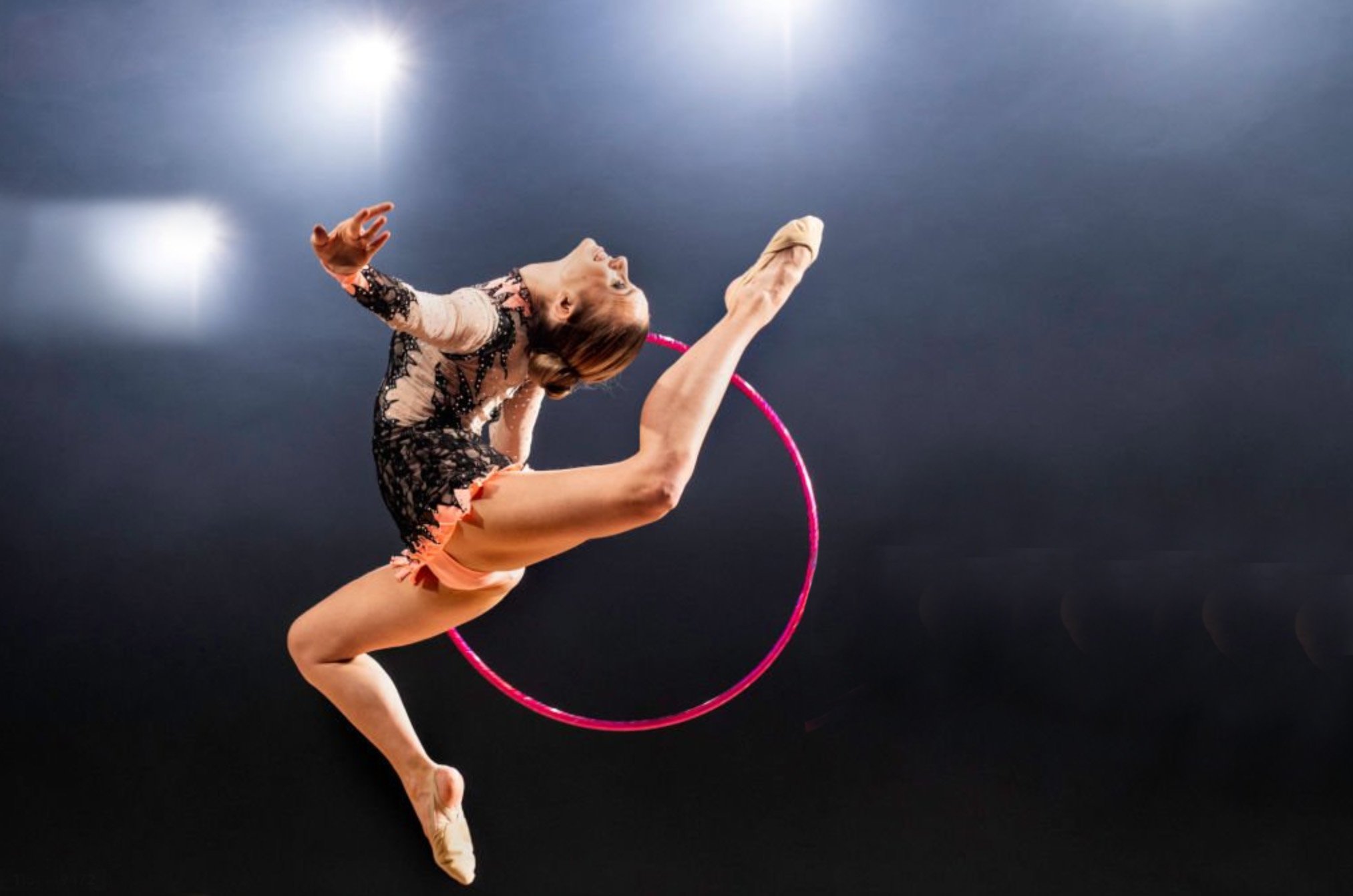
Being a rhythmic gymnast can be cost-prohibitive. Here are some examples of costs associated with this sport.
Equipment Expenses
$140 for a ball sounds extreme. But that is the average cost of a rhythmic gymnastics ball. What makes rhythmic gymnastics different from artistic or any other kind of gymnastics is the use of various apparatuses such as a ball, clubs, hoop, rope, and ribbon in the routines. These apparatuses must be made of special durable materials and conform to the requirements and regulations of the International Gymnastics Federation (FIG). Each Olympic cycle, rhythmic gymnasts must work with 3-4 apparatuses. The average cost of the items varies from $40 for a ribbon stick (add a ribbon and a connector for extra $40+) to $140 for a ball or a pair of clubs.
In addition, the gymnasts must purchase knee pads, training outfits, a gym bag, yoga blocks, hair accessories, and many other miscellaneous items.
Competition Apparel
Rhythmic gymnasts wear beautiful, sparkling leotards when they compete. Each leotard is unique; its colors and design must match the music and the character of the performance. Each leotard is adorned with hundreds and often thousands of crystals. The price of a competition leotard can range from $300 (used) to well over $2400 (those are usually purchased by the gymnasts competing in international championships and the Olympics). An average cost of a leotard for an 11–13-year-old rhythmic gymnast is about $600. And each athlete needs at least two of those. Then the girls grow or their music and the routine changes. And the parents must purchase new leotards.
Let’s not forget the toe shoes. Just like a ballerina needs point shoes, a rhythmic gymnast needs toe shoes. The average cost of a pair of knit toe shoes for younger girls is $15, and a pair of leather toe shoes for older gymnasts is $30. With all the leaps and turns the rhythmic gymnasts perform, the life span of a pair of toe shoes is less than a month.
Some additional expenses are podium track suit that a gymnast wears for the awards ceremonies and high quality hair products to keep the hair in a high bun during trainings and competitions along with makeup (needs to be of good quality to be sweat resistant and stay on for hours).
Training Expenses
Practice makes perfect. This is true for every professional sport. Rhythmic gymnasts train anywhere from 9 to over 25 hours a week. Younger gymnasts train 3-4 days a week for 3 hours each time. Higher level gymnasts (levels 8, 9, 10) train 18-25 hours a week with additional hours before major competitions. The monthly tuition varies for different clubs and reflects the cost of living in different states. If an amateur dance or ballet class that meets for one hour once a week costs roughly $100, imagine the cost of training for 20 hours a week at a professional club!
Competition and Travel Expenses
Rhythmic gymnastics competition season begins in September and runs through June. Per USAG rules, each rhythmic gymnast must participate in two invitation competitions, in a state championship, and in the regionals. That is the minimum. In reality, most rhythmic gymnasts have at least one or two competitions every month, and higher levels compete almost every weekend. The competition costs include competition entry fee that ranges from $120 to $190 (depending on the gymnast’s level), travel, hotel, food, uber or other transportation, paying coaching fees, and splitting the cost of the coaches’ travel. In addition, when a young rhythmic gymnast goes to an out of state competition, most often one of the parents travels with her which doubles the cost of airfare and many other expenses.
Depending on where the competition takes place, where the athlete is traveling from, and several other factors, a cost to attend one competition can range from several hundred to several thousand dollars per competition.

